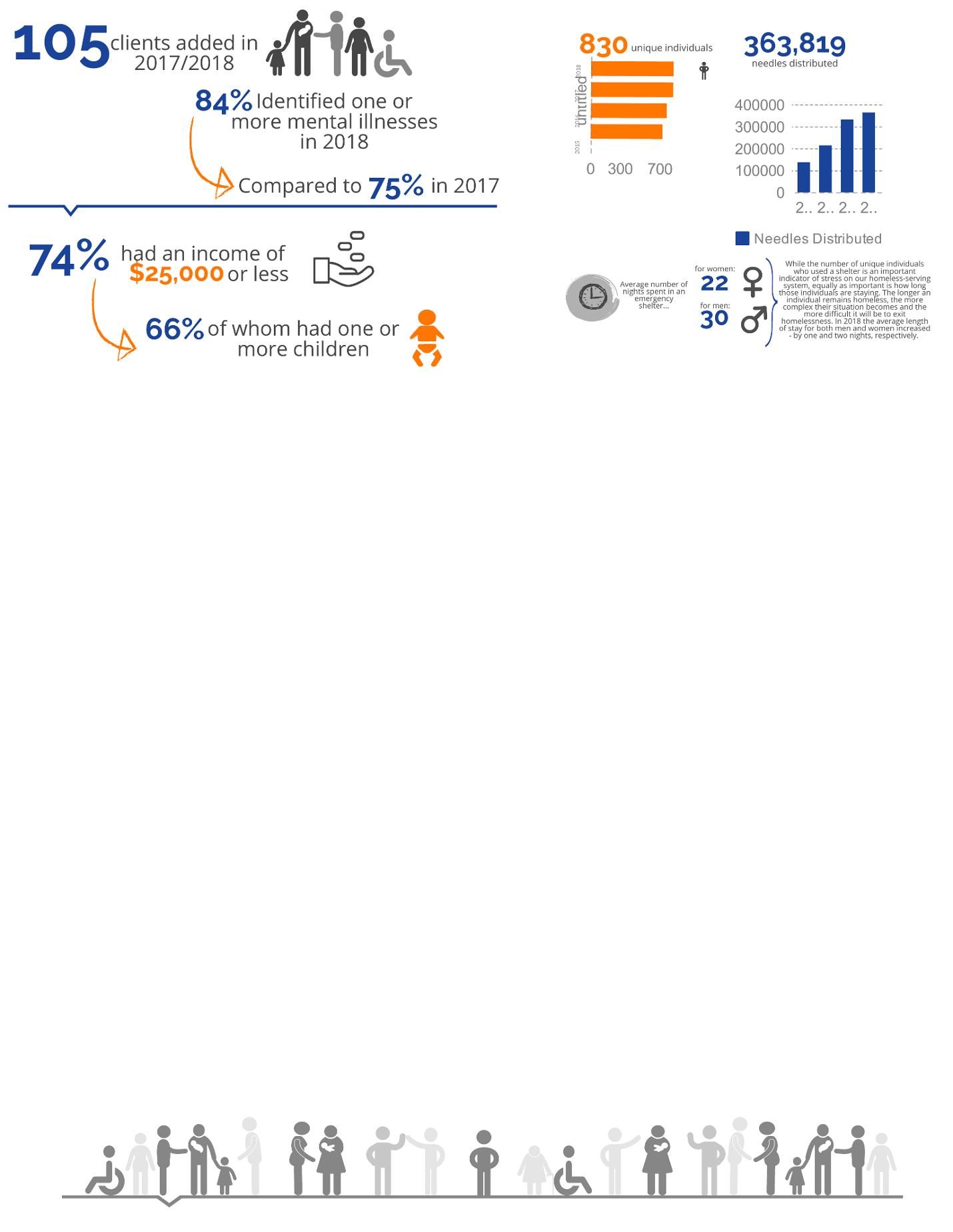
2 minute read
Housing Indicators
The table below highlights some informative indicators, including the number of Public Housing units, number of rent supplements, and the number of families on the waiting list for affordable housing in the Saint John region. These are important factors for consideration - particularly when comparing from one year to the next. Over the past few years the Saint John region has seen an increasingly long waiting list for affordable housing, without a corresponding increase in public housing units. While Social Development has increased the number of rent supplements in the region year over year (a favourable trend), it has not been nearly enough to meet the needs of those seeking affordable housing. The unfortunate lack of suitable housing options is compounded by a basic social assistance rate of $537 which has not been increased since 201 0, a rising cost of rent, and decreasing vacancy rates.
While the low social assistance rate has long been a challenge in this area, rising rents and decreasing vacancy rates are a relatively new factor. As the table below indicates, the current vacancy rate in Saint John is less than 4 percent. This is significantly lower than the nearly 1 0 percent vacancy rate that the city was accustomed to only a couple of years ago. While this is promising for our economy, it poses a very real challenge for housing programs and individuals seeking affordable housing. When vacancy rates are low, landlords can raise rents. While Saint John is certainly due for an increase in rental costs, having enjoyed some of the lowest rates of any urban centre in Canada, increased rents can snowball and quickly become higher than what is approved for a rent subsidy from NB Housing. If that?s the case, the overall pool of available affordable housing shrinks considerably. Additionally, higher rents may mean property owners will be less likely to participate in the rent supplement program. If landlords believe they can collect higher rent from the general rental market than by having a rent subsidy attached to the unit, they?ll likely choose the former. Taken together, all of these factors mean that for many of our city's most vulnerable people, affordable housing is simply out of reach. In 201 8 the Common Front for Social Justice launched a campaign to have Social Assistance rates in New Brunswick increased. According to the Common Front, the current basic rate of $537, indexed to inflation, would be $604.18. While still significantly below the average rent for a one bedroom in Saint John (highlighted in the table below), this increase would compensate recipients for the loss in purchasing power they have experienced over the last ten years, due to inflation. (Common Front, 201 8).




